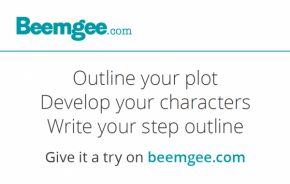Narrator
In storytelling, one of the most far-reaching decisions an author must make is how to narrate the story. Or: Who will be the narrator?
While not a traditional archetype, and in many cases not even a participating character, the narrator is never really quite the same entity as the author either. Standard narrator types are:
- first-person, where usually the protagonist tells his or her own story
- third-person limited, where a narrator tells a story from one character’s point of view only, meaning that the audience/reader is not told of any events that this character is unaware of
- third-person omniscient, where the narrator can relate what any of the characters are doing and thinking, and is not limited in what to present to the audience/reader
In film, first person and third-person limited effectively amount to the same thing: the audience gets only one person’s perspective on the story (there is also the first-person camera angle, but rarely is an entire film presented that way). In prose, first and third person is the difference between “I did this” and “she (or he) did that”. This is a stylistic choice. In the sense of what the narrator knows and tells, there is not necessarily much difference.
But potentially there is. A narrator who is limited to reporting in third person on only one character can do so “close” or “from a distance”. In the former, the narrator tends to remain neutral, reporting without explicit commentary. In the latter, a sort of birds-eye view of the goings on, in both space and time, may bestow upon the narrator a greater awareness, allowing him or her to comment on or display an attitude towards the character who is trapped down in the street-level of plot and interaction with other characters. Most voice-overs by narrators in movies work like this.
The difference between close and from a distance holds for an omniscient narrator too. A close all-seeing and all-knowing narrator can jump to any character at will. If the author decides to allow the narrator to comment, then that narrator takes on a personality of his or her own, and may even be a character in his or her own right, perhaps to the extent of taking part in the action at some point. A famous example of this technique is John Fowles’ The French Lieutenant’s Woman.
So, the type of narrator determines the degree of discrepancy of awareness between the narrator and the characters.
Compose your story. Click to open our free web-tool:

The author must also choose whether to reveal what sort of text it is that the narrator is ostensibly fabricating, so what the reader is reading (or the viewer is watching). A first-person novel may take the form of a certain text type, for example of a journal, which determines the tense the narrator uses and the narrator’s awareness. The text type may be clearly named, as in William Boyd’s Any Human Heart (diary), or it may only be revealed later, as in Nabokov’s Lolita (defence plea).
In a first-person story, the narrator can know more than the character (i.e. him or herself) if the narrator is relating a story with the benefit of hindsight, for example as an old person talking about his or her own youth.
It can be satisfying, though possibly more because of the thrill of solving a puzzle than through the effects of the story, when an author forces the audience or reader to decode what the narrator tells. For instance by restricting the narrator to reporting only a character’s particular point of view. If the character doesn’t understand what’s going on, and the narrator does not explain it – and the audience might get it anyway.
Benjy in The Sound And The Fury watches them hitting, hitting, and it takes the reader a while to figure out that Benjy is watching men play a game of golf, but does not have the words to describe it. Similarly in William Goldings The Inheritors, prehistoric Lok for the first time in his life meets a person from another tribe, who holds out a stick to him that shrinks at both ends. Suddenly the tree next to Lok sprouts a branch. Lok has never seen bow and arrow before, and therefore does not understand that he was just shot at, let alone have the words to describe it. The reader, after a bit of decoding, understands anyway.
Implicit in all this are the following “people” involved in the act of producing and consuming a story:
- Author
- Narrator
- Ideal Reader/Viewer (who understands everything the author is trying to achieve)
- Real Reader/Viewer (who may not be paying that much attention …)
